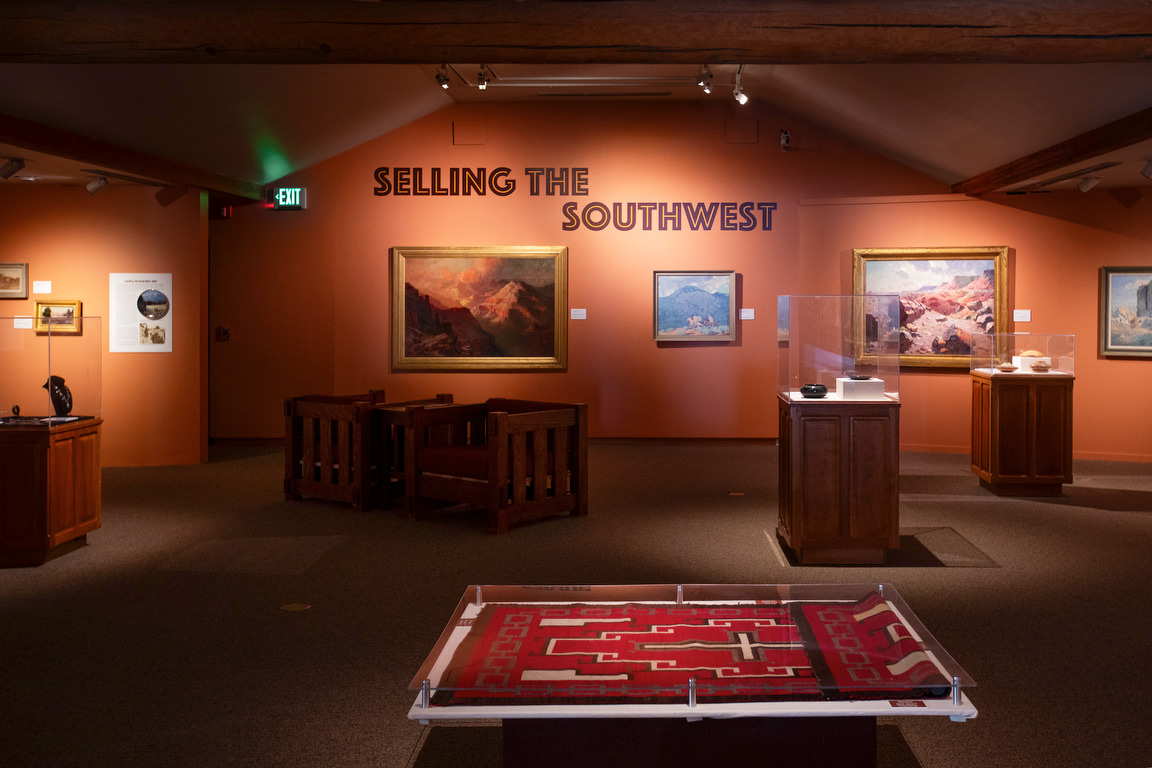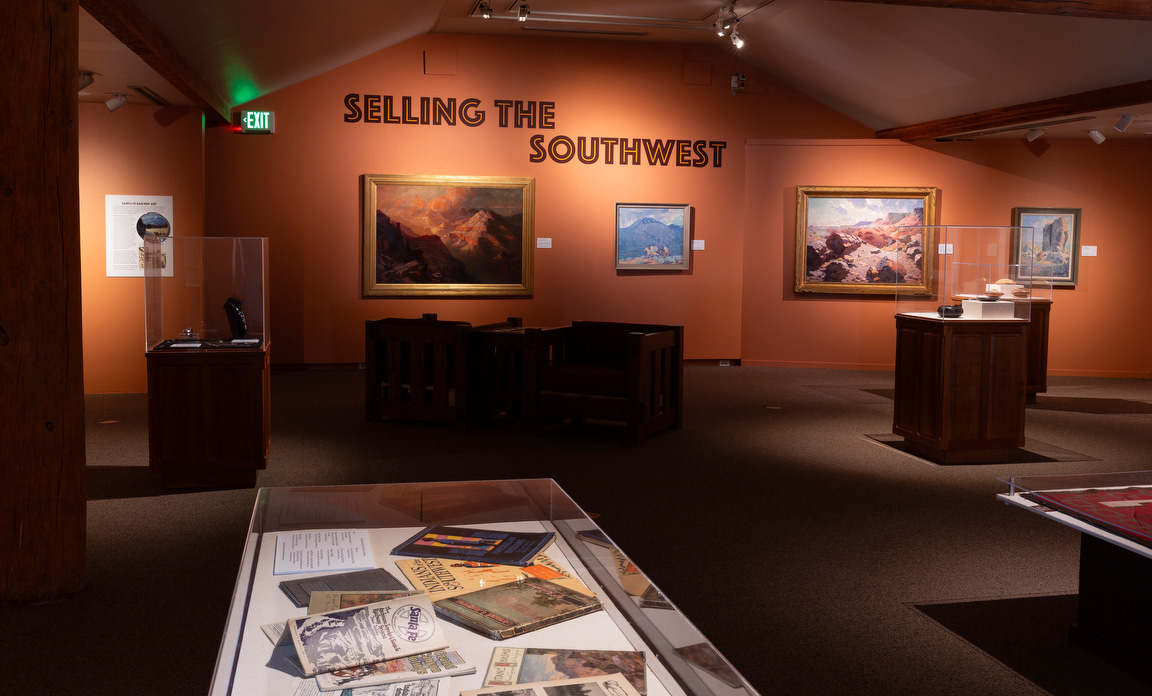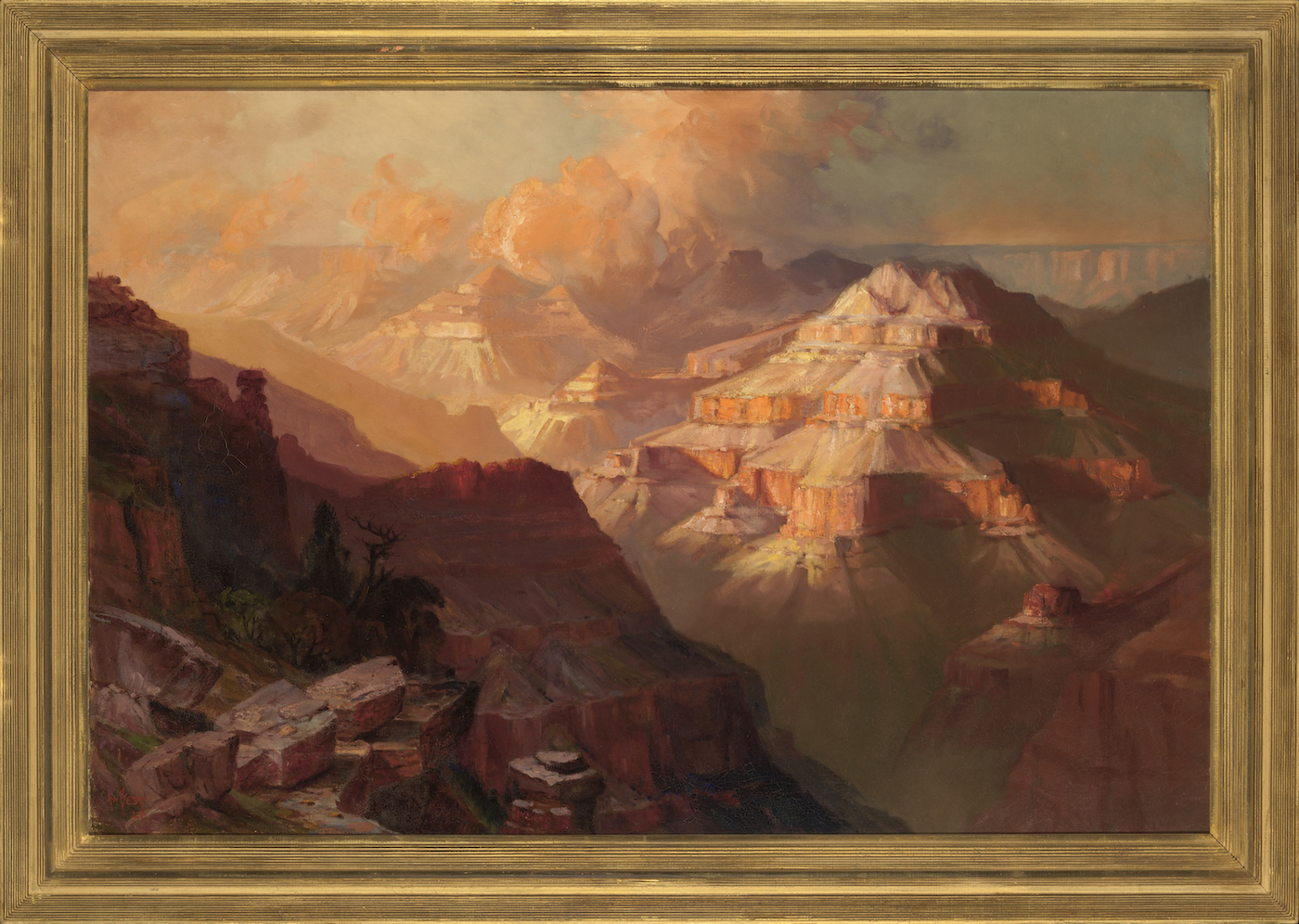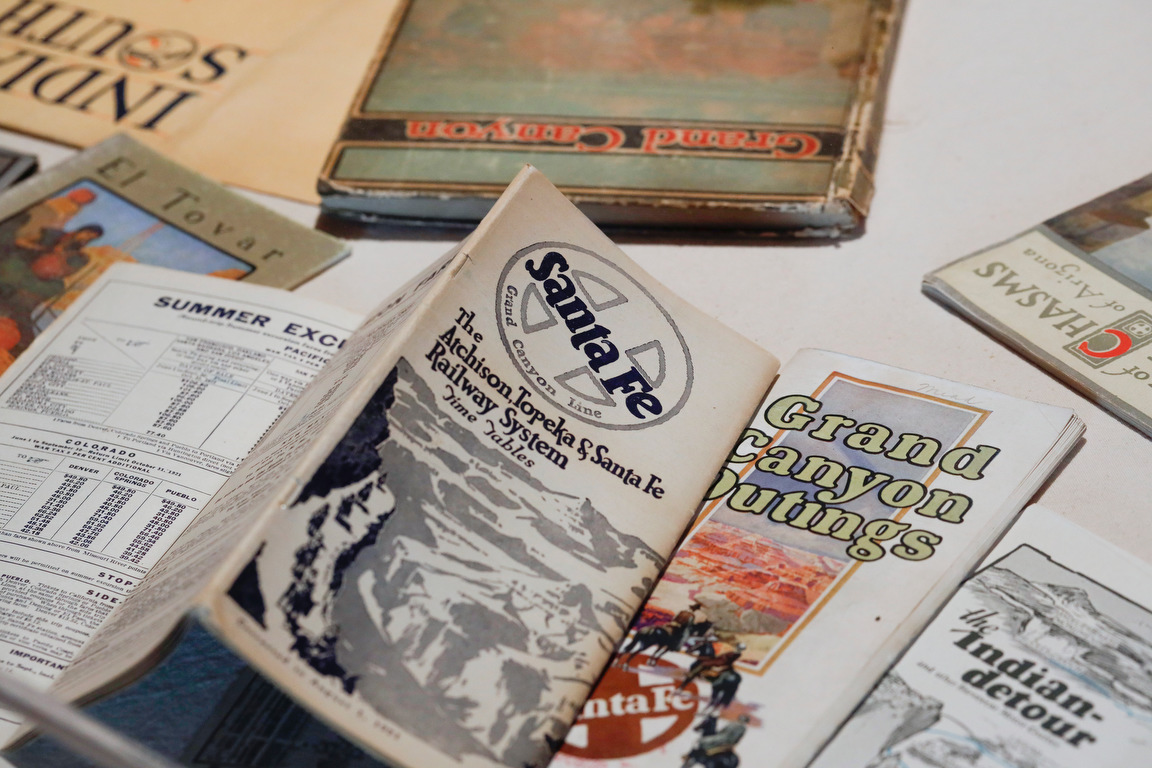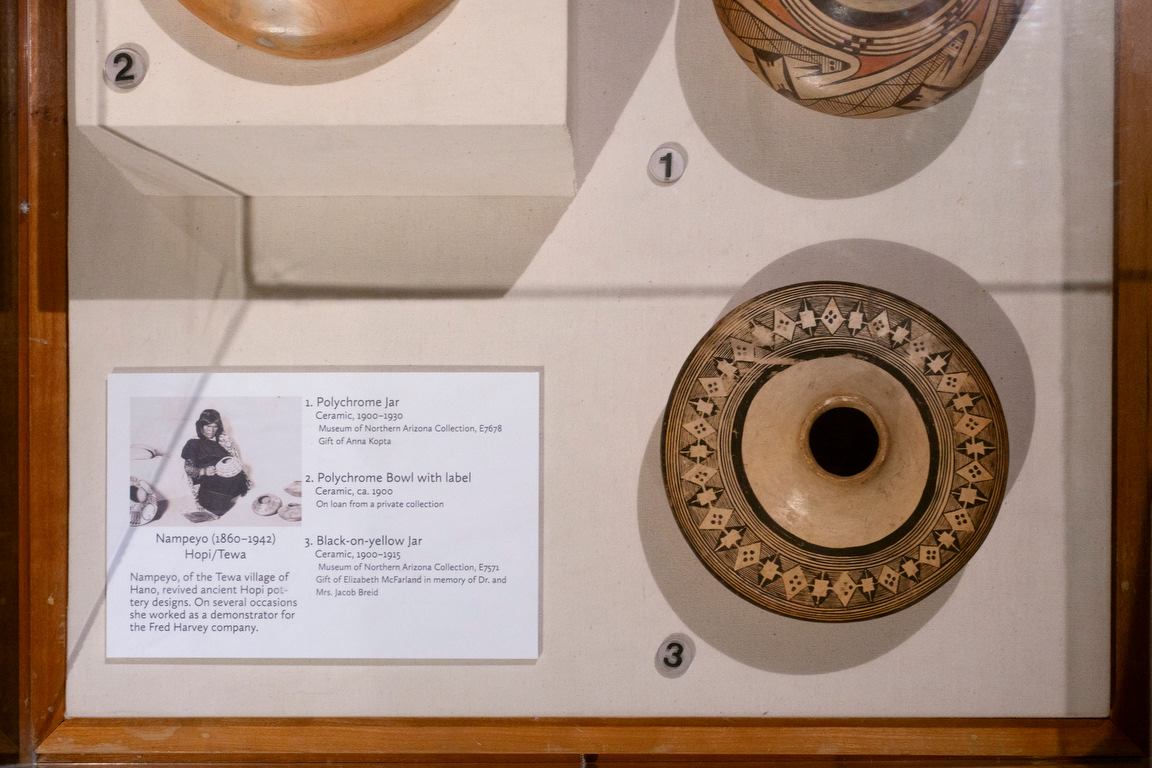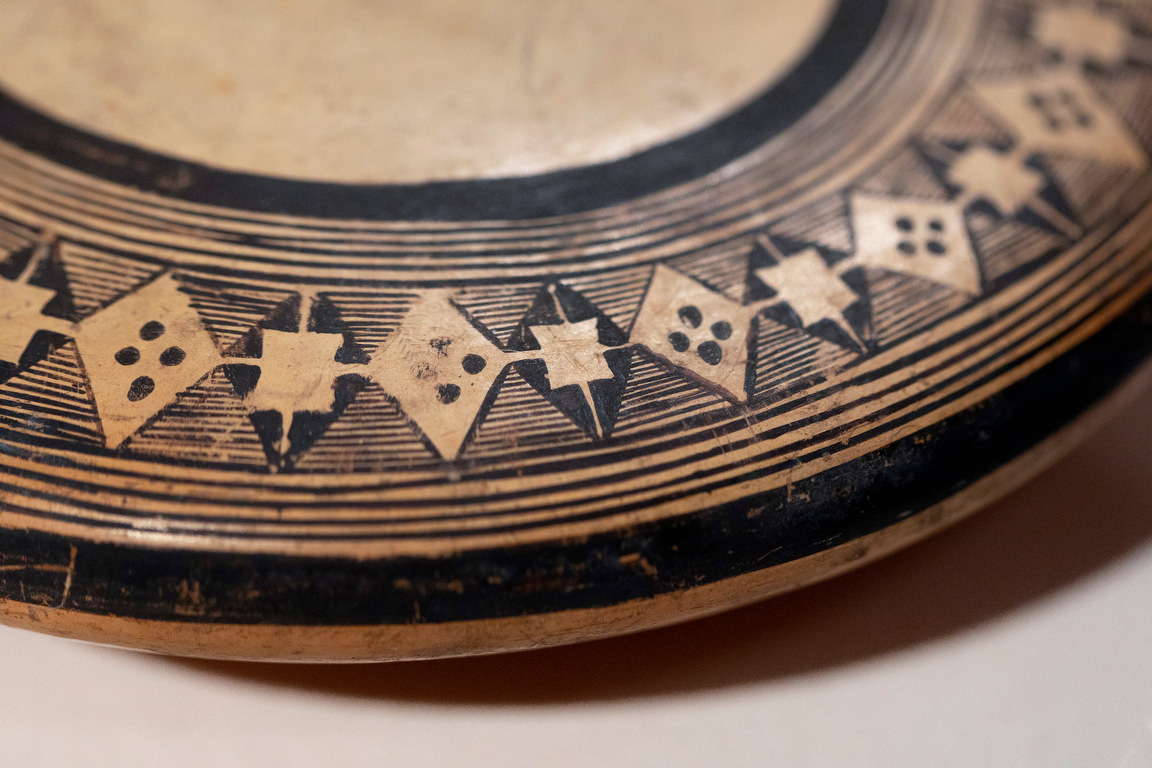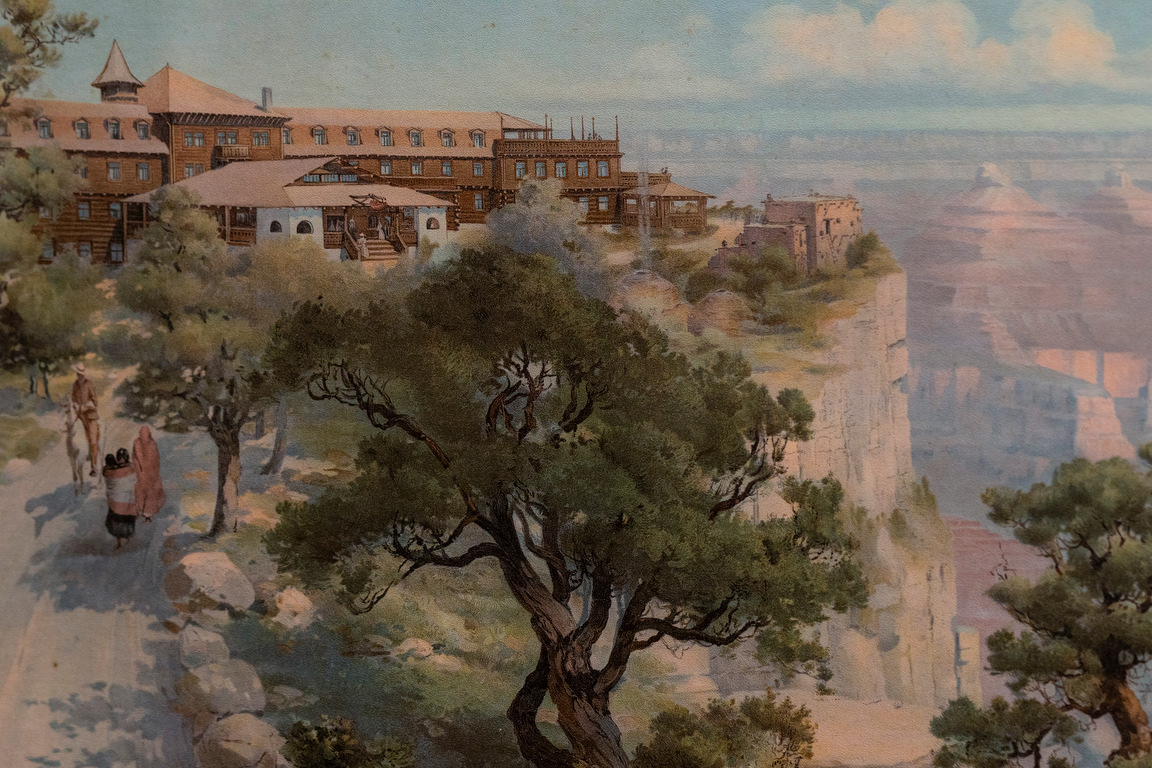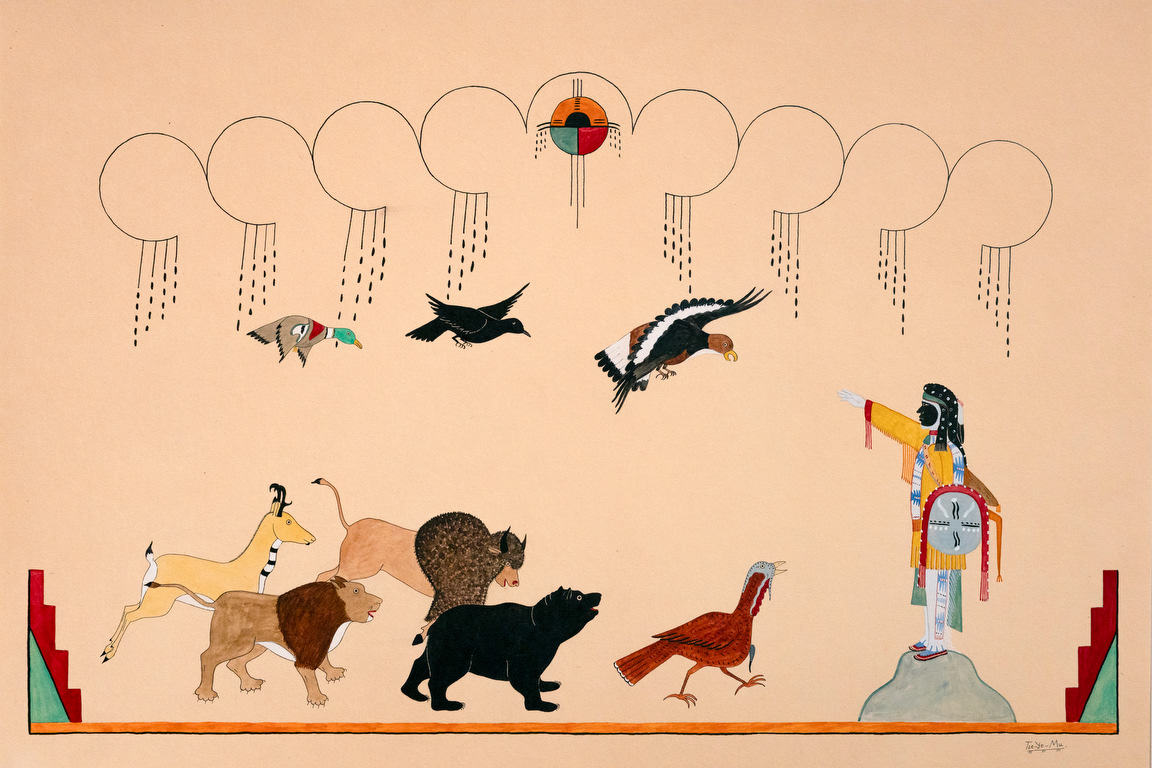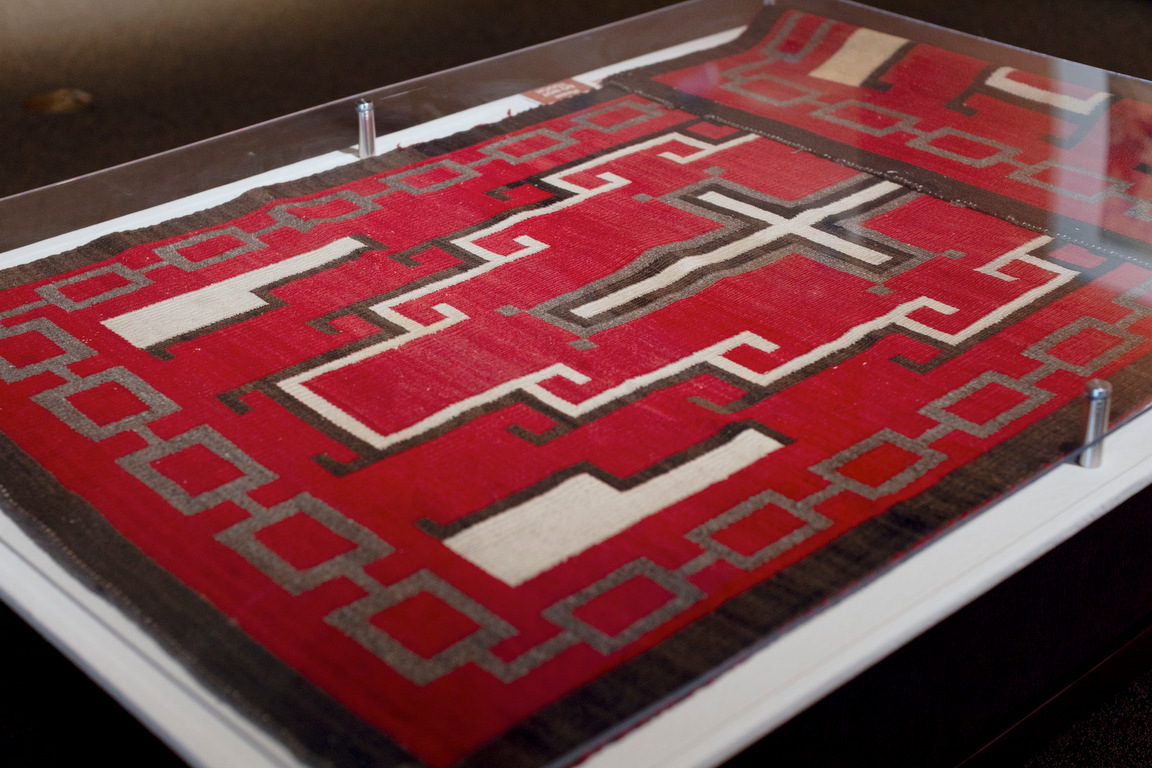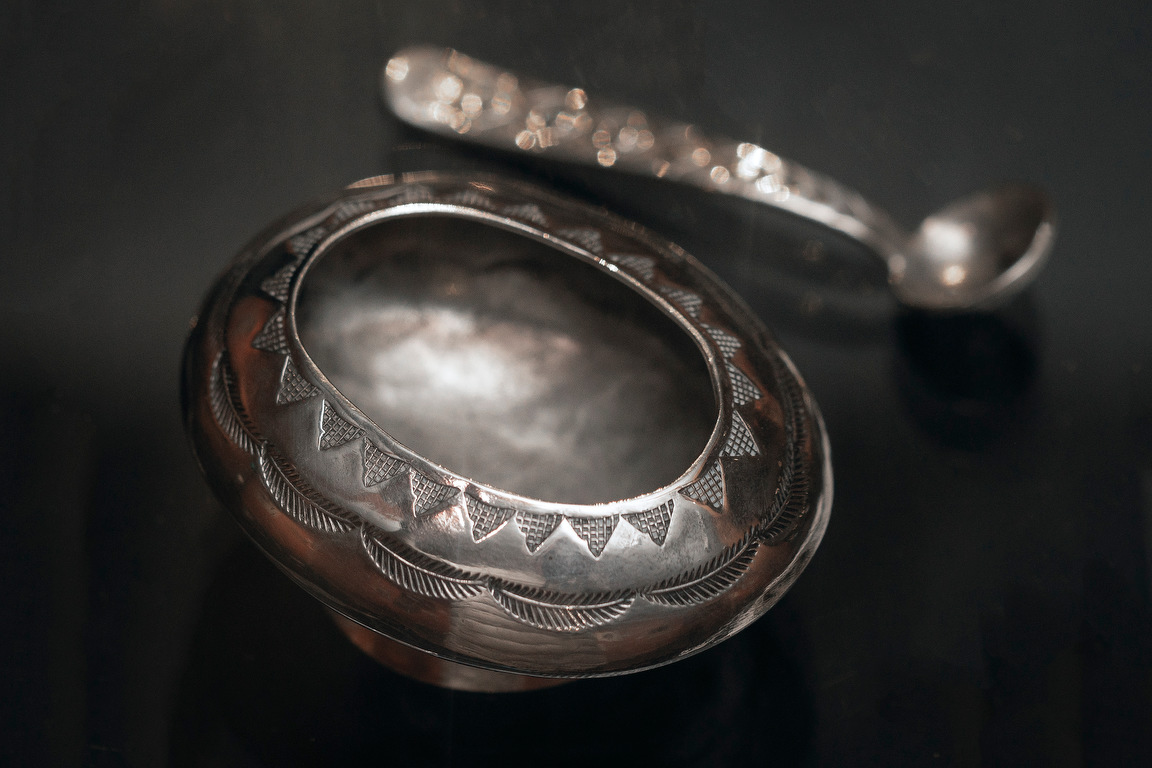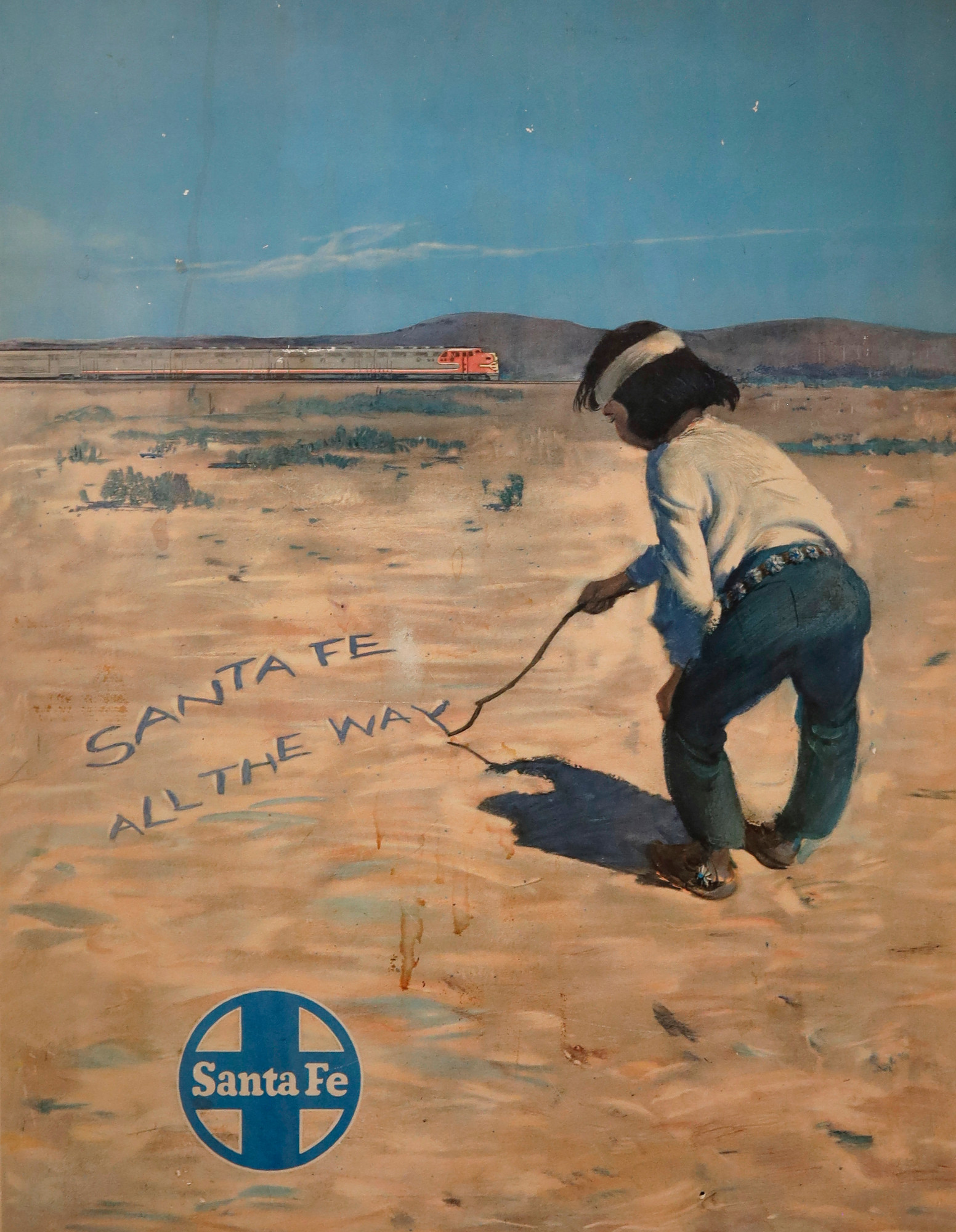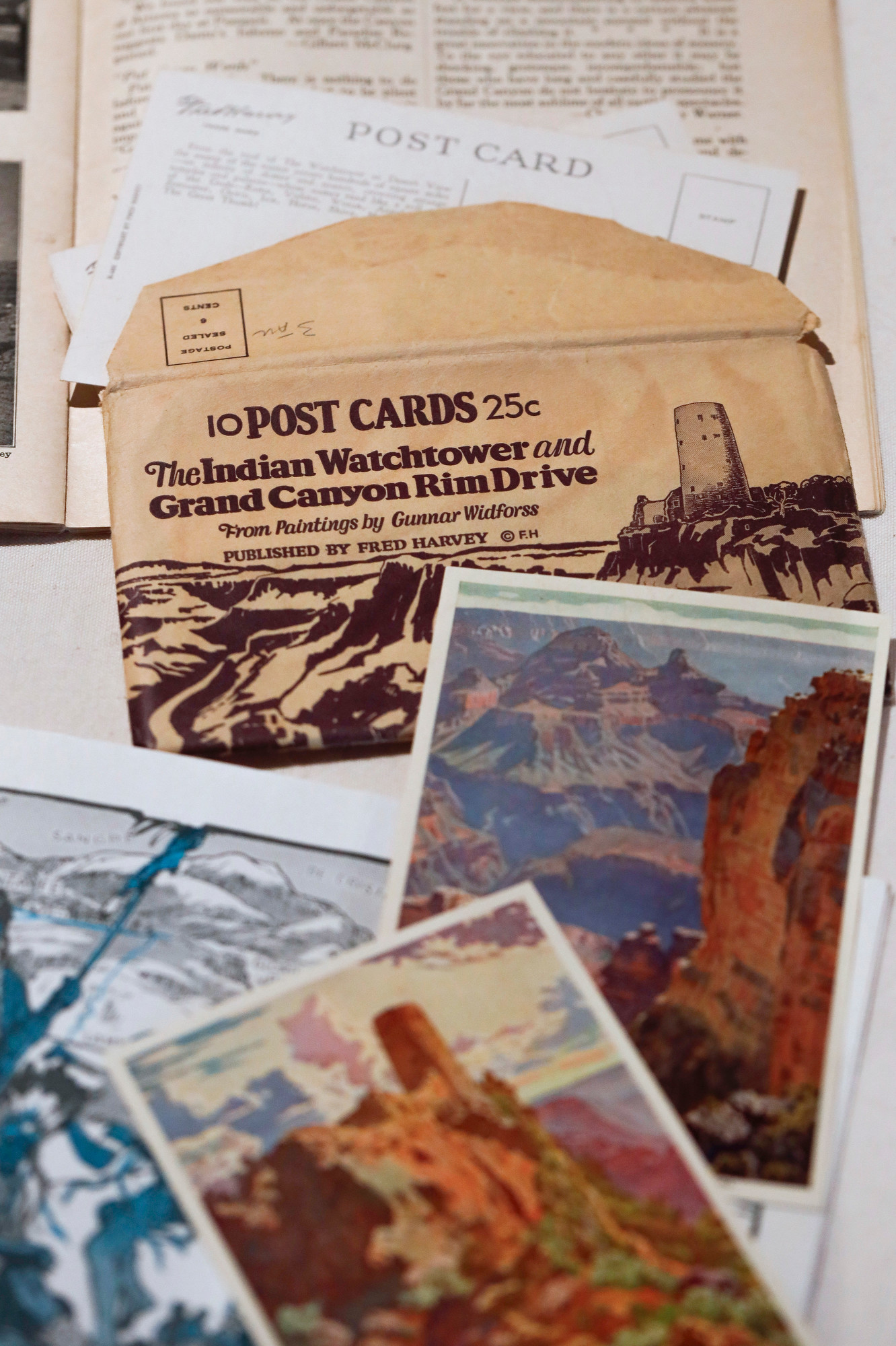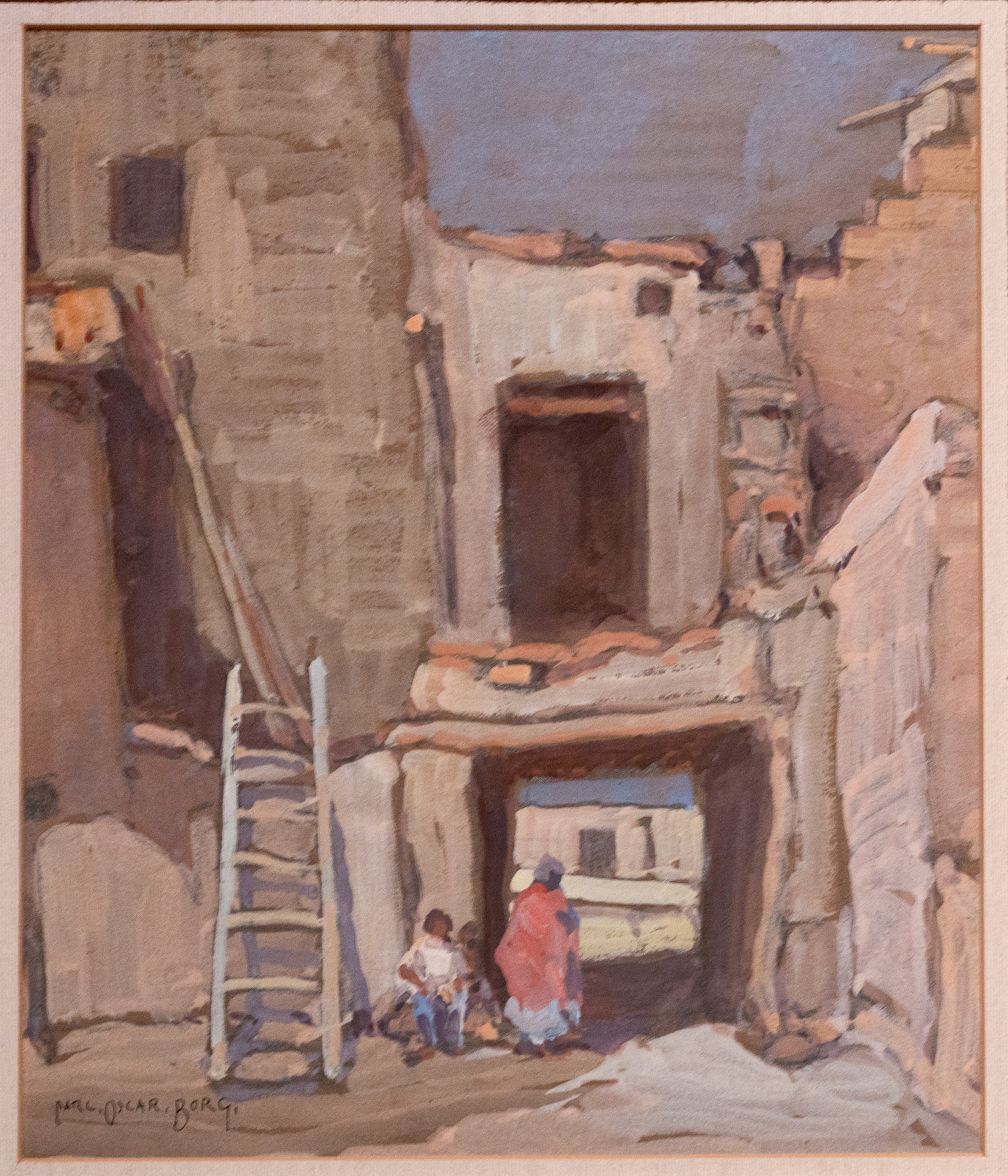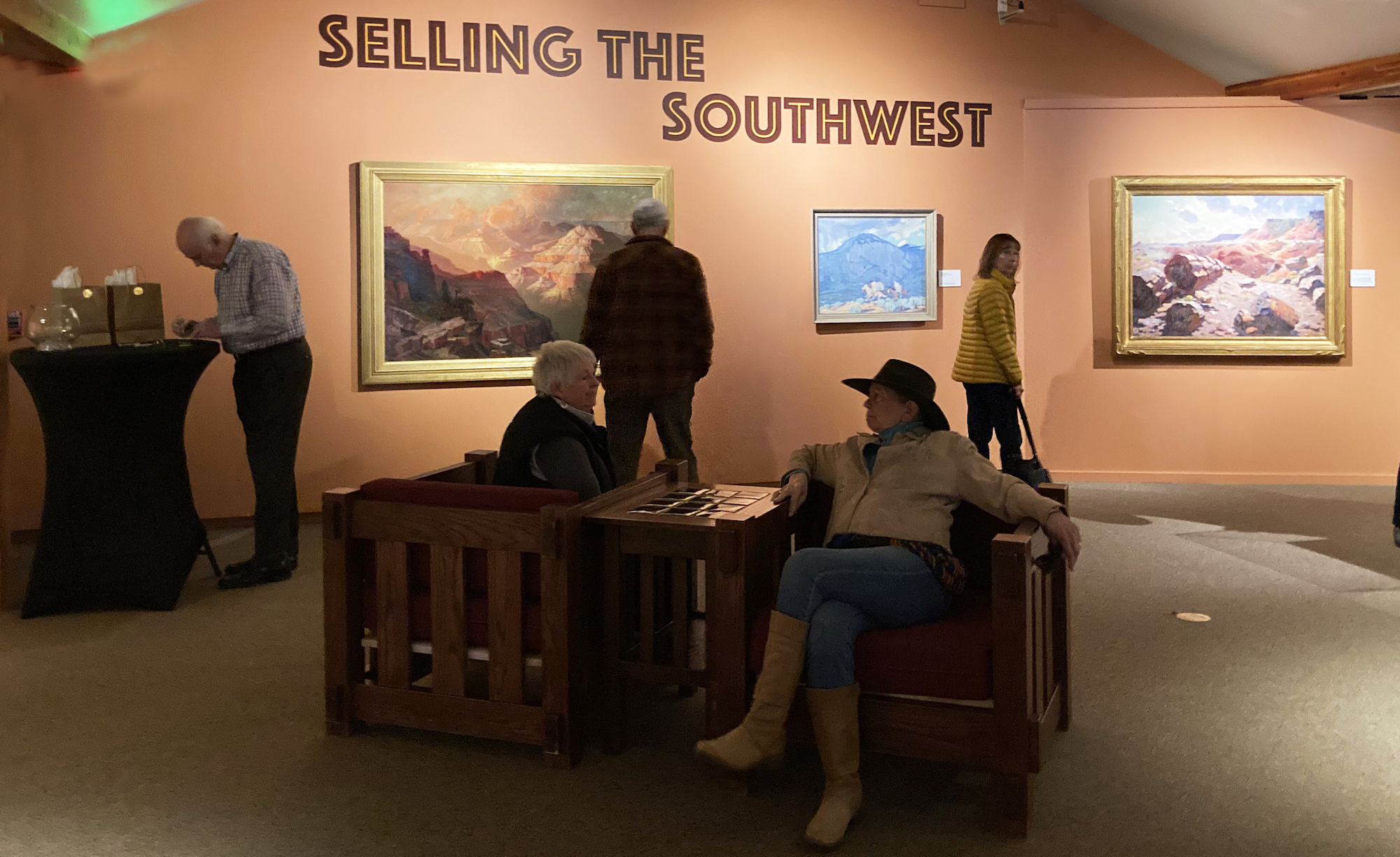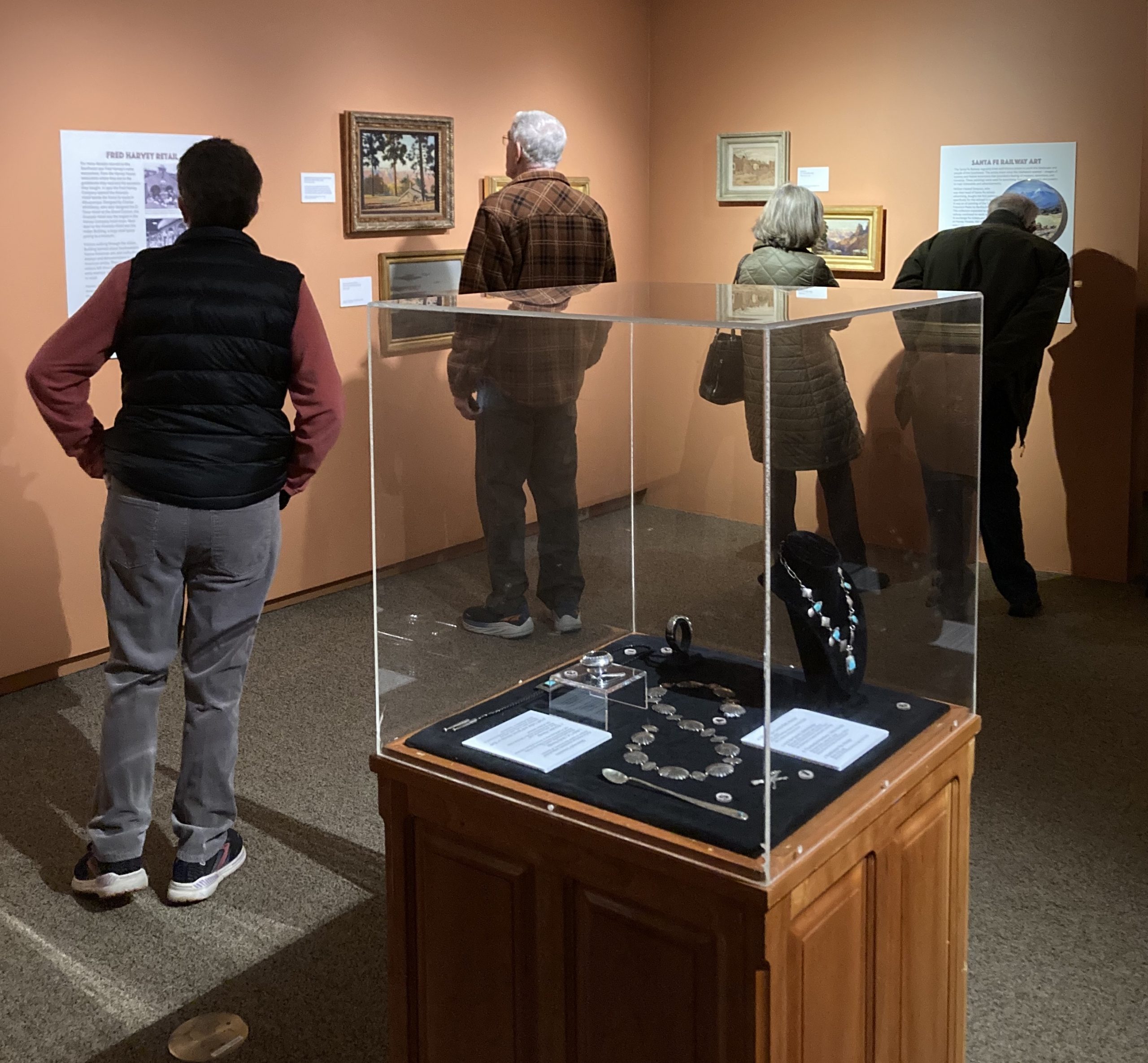
Selling the Southwest
January 28, 2024 - January 5, 2025
At the turn of the nineteenth century, the Santa Fe Railway and Fred Harvey Company worked with artists to promote travel to the Southwest. Their goal was to sell train tickets and fill hotel beds, but along the way these companies spread romanticized ideas about the Southwest that remain to this day. They left a lasting mark on Southwestern culture and art. This exhibition showcases some of the art by artists who are now prominent names in the canon of classic Southwest art, including Thomas Moran, Louis Akin, and Gunnar Widforss.
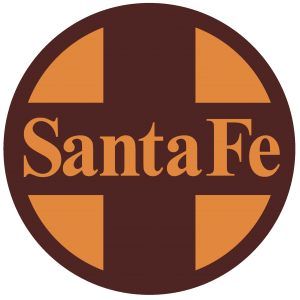 In 1887 the Santa Fe Railway made it possible to travel from Chicago to Los Angeles by train, crossing northern Arizona. Charles Higgins, the railway’s head of advertising, came up with a clever idea to attract travelers to make this journey. In 1892 he brought the artist Thomas Moran to Grand Canyon as a guest of the railroad. He then used Moran’s painting to advertise train journeys to the Grand Canyon. The marketing campaign was a success and led the railroad to make similar arrangements with other well-known artists.
In 1887 the Santa Fe Railway made it possible to travel from Chicago to Los Angeles by train, crossing northern Arizona. Charles Higgins, the railway’s head of advertising, came up with a clever idea to attract travelers to make this journey. In 1892 he brought the artist Thomas Moran to Grand Canyon as a guest of the railroad. He then used Moran’s painting to advertise train journeys to the Grand Canyon. The marketing campaign was a success and led the railroad to make similar arrangements with other well-known artists.
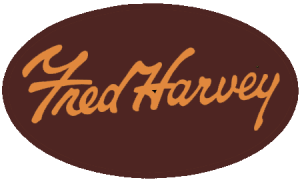 The Fred Harvey Company enthusiastically joined the railroad in promoting travel to the Southwest, with a focus on entertaining and educating visitors. Along the rail route, the Harvey Company provided travelers with good food and lodging. The company hired gifted Native American artists to demonstrate their craft in Harvey shops, where tourists could then purchase similar items as souvenirs. Tourists could also buy and read Harvey Company publications on everything from geology and Pueblo pottery to Navajo textiles and jewelry.
The Fred Harvey Company enthusiastically joined the railroad in promoting travel to the Southwest, with a focus on entertaining and educating visitors. Along the rail route, the Harvey Company provided travelers with good food and lodging. The company hired gifted Native American artists to demonstrate their craft in Harvey shops, where tourists could then purchase similar items as souvenirs. Tourists could also buy and read Harvey Company publications on everything from geology and Pueblo pottery to Navajo textiles and jewelry.

